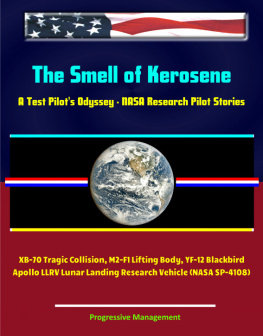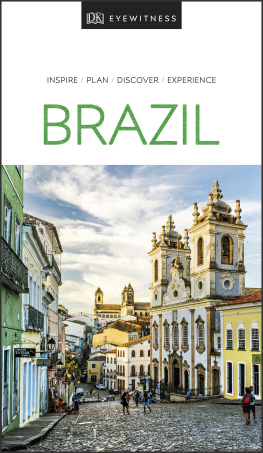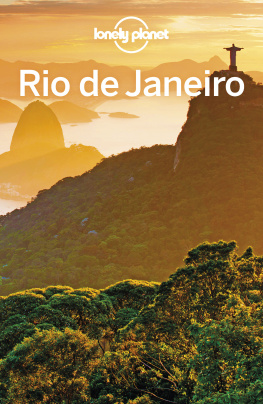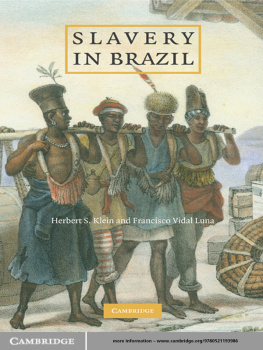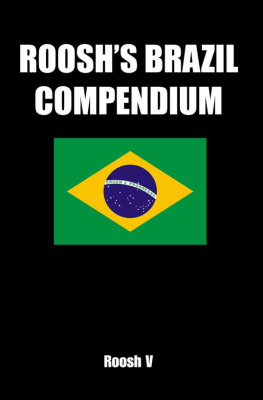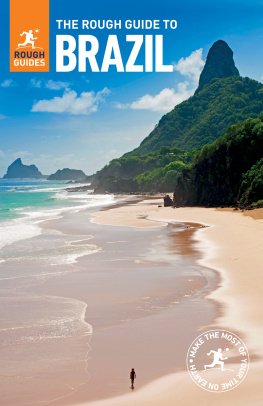Brazil in Perspective - Orientation Guide andPortuguese Cultural Orientation: Geography, History, Economy,Society, Security, Military, Religion, Sao Paulo, Rio de Janeiro,Guiana Highlands, Amazon
* * * * * * * * * * * *
Progressive Management
* * * * * * * * * * * *
Smashwords Edition
Copyright 2014 Progressive Management
Questions? Suggestions? Comments? Concerns?Please contact the publisher directly at
Remember, the book retailer can't answer yourquestions, but we can!
* * * * * * * * * * *
Smashwords Edition, License Notes
This ebook is licensed for your personalenjoyment only. This ebook may not be re-sold or given away toother people. If you would like to share this book with anotherperson, please purchase an additional copy for each person youshare it with. If you're reading this book and did not purchase it,or it was not purchased for your use only, then you should returnto Smashwords.com and purchase your own copy. Thank you forrespecting the hard work of this author.
* * * * * * * * * * *
This is a privately authored news service andeducational publication of Progressive Management. Our publicationssynthesize official government information with original material -they are not produced by the federal government. They are designedto provide a convenient user-friendly reference work to uniformlypresent authoritative knowledge that can be rapidly read, reviewedor searched. Vast archives of important data that might otherwiseremain inaccessible are available for instant review no matterwhere you are. This e-book format makes a great reference work andeducational tool. There is no other reference book that is asconvenient, comprehensive, thoroughly researched, and portable -everything you need to know, from renowned experts you trust. Forover a quarter of a century, our news, educational, technical,scientific, and medical publications have made unique and valuablereferences accessible to all people. Our e-books put knowledge atyour fingertips, and an expert in your pocket!

* * * * * * * * * * * *
CONTENTS
* * * * ** * * * * * *
* * * * * * * * * * * *
* * * * * * * * * * * *
Technology Integration Division
May 2013
Defense Language Institute
Foreign Language Center
* * * * * * * * * * * *
CHAPTER 1 - GEOGRAPHY
Introduction
Geographic Regions and Features
Guiana Highlands
Amazon Basin
Pantanal
Brazilian Highlands
Coastal Lowlands
Climate
Bodies of Water
Major Cities
Brasilia
Sao Paulo
Rio de Janeiro
Salvador
Manaus
Environmental Concerns
Destruction of the Rainforest
Pollution
Illegal Wildlife Trade
Natural Hazards
Chapter 1 Assessment
CHAPTER 2 - HISTORY
Introduction
Pre-Colonial History
The Early Colonial Era
Colonial Expansion and Slavery
Independence
The Brazilian Empire and Republic
The Vargas Era (1930-1954)
The Republic After Vargas (1954-1964)
Military Rule (1964-1985)
Democracy and Reform
Recent Events
Chapter 2 Assessment
CHAPTER 3 - ECONOMY
Introduction
Agriculture
Sugarcane and Ethanol
Coffee
Cattle Ranching
Industry
Energy
Oil
Natural Gas
Electricity
Nuclear
Trade
Transportation
Tourism
Banking and Finance
Standard of Living
Employment
Public vs. Private Sector Outlook
Chapter 3 Assessment
CHAPTER 4 - SOCIETY
Introduction
Race and Ethnicity
Ethnic Background
Racial Categories and Relations
Language
Religion
Gender Issues
Cuisine
Arts
Capoeira
Sports
Chapter 4 Assessment
CHAPTER 5 - SECURITY
Introduction
U.S.-Brazil Relations
Relations with Neighboring Countries
Argentina
Paraguay
Uruguay
Bolivia
Peru
Colombia
Venezuela
The Guyanas
Ecuador and Chile
Military
Internal Security Forces
Issues Affecting Internal Stability
Violent Crime, Drugs, and Terrorism
Corruption and Human Rights Violations
Land Distribution and Reform
Water Security
Looking Forward
Chapter 5 Assessment
FINAL ASSESSMENT
FURTHER READING AND RESOURCES
Films
FOOTNOTES
* * * * * * * * * * * *
CHAPTER 1
GEOGRAPHY
Introduction
Brazil is the largest country in LatinAmerica and the fifth-largest nation in the world.1 Occupying thenortheast portion of the South American continent, its area of 8.5million sq km (3.3 million sq mi) surpasses that of the continentalUnited States and makes up about half of the South Americanlandmass.2 At its widest east-to-west point, Brazil stretches 4,320km (2,684 mi). From north to south, its 4,395 km (2,731 mi) of landcrosses both the Equator and the Tropic of Capricorn.3, 4
Brazil is home to the world's densest rivernetwork. With eight hydrologic basins, Brazil has most of theworld's largest rainforest (the Amazon), wetland (the Pantanal),and the world's greatest biological diversity, including humanpopulations that have remained isolated since prehistorictimes.5
Brazil also is one of the world's largesteconomies and democracies.6 It is home to 200 million people, ofwhom 87% live in urban areas.7 Approximately 70% of the populationlives on the eastern seaboard, along 7,491km (4,654 mi) of Atlanticshoreline.8 The remaining 30% live in the more sparsely populatedinterior to the west, where Brazil shares borders with every SouthAmerican country except Chile and Ecuador: Argentina, (1,261 km,783 mi); Bolivia (3,423 km, 2,127 mi); Colombia (1,644 km, 1,021mi); French Guiana (730 km, 452 mi); Guyana (1,606 km, 998 mi);Paraguay (1,365 km, 848 mi); Peru (2,995 km, 1,861 mi); Suriname(593 km, 368 mi); Uruguay (1,068 km, 663 mi); and Venezuela (2,200km, 1,367 mi).9
In 1500, Portuguese explorers claimed theland that soon became known as Terra do Brazil, after thebrazilwood tree.10 The Atlantic coast attracted Portuguese andFrench traders who were met by indigenous tribes curious and eagerto trade.11 The recent discovery of offshore oil reserves may haveserious environmental costs along with economic benefits, as miningand logging activity in the interior once did.12, 13 The U.S. oilcompany Chevron accepted responsibility for a 2011 oil spill offthe coast of Rio de Janeiro.14, 15, 16 The Atlantic rainforest hasbeen severely deforested for agriculture, which has made manyspecies disappear from the area.17, 18, 19
Geographic Regions and Features
Guiana Highlands
The Guiana Highlands rise just north of theEquator, straddling Brazil and its northern neighbors (Venezuela,Guyana, Suriname, and French Guiana). Forest-covered, mineral-richmountains are home to rugged waterfalls and rivers.20 Brazil'shighest peaks are here. Pico da Neblina rises 3,014 m (9,888 ft) atthe Venezuelan border in the Serra do Imeri range, and flat-toppedMonte Roraima ascends 2,772 m (9,094 ft) at the border of Brazil,Guyana, and Venezuela in the Serra da Pacaraima range.21 The SerraTumucumaque range, which separates Brazil from Suriname and FrenchGuiana, is a fabled location of the mythical El Dorado, city ofgold, which drew Europeans to the New World.22, 23
Many tributaries of the Amazon River flowsouth from the Guiana Highlands. The sparse regional populationincludes indigenous peoples such as the Yanomami, whose traditionalhomeland extends into southern Venezuela. The highlands are a siteof conflict between indigenous peoples, miners, and loggers whowant to exploit mineral and timber resources.24, 25, 26
Next page


